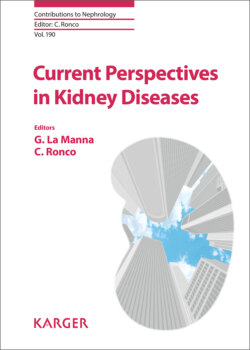Читать книгу Current Perspectives in Kidney Diseases - Группа авторов - Страница 18
На сайте Литреса книга снята с продажи.
Dose
ОглавлениеA relevant issue in RRT for S-AKI is the optimal dose of renal support. The “Vicenza study” conducted by Ronco et al. [46] showed a better survival in patients treated with a filtration rate ≥35 mL/kg/h, in particular, in the presence of sepsis. Subsequent evidence from 2 multicenter trials (RENAL – Randomized Evaluation of Normal versus Augmentated Level Renal Replacement Therapy [47] and ATN – Veterans Affairs/National Institutes of Health Acute Renal Failure Trial Network Study) [48], showed no beneficial effects when high-intensity dose RRT was compared to lower doses. On the contrary, in the RENAL study a post-hoc analysis showed a trend toward a reduction in mortality rate in S-AKI patients treated with high-intensity dose (40 mL/kg/h). Subsequently the IVOIRE study [49] compared high-volume hemofiltration (HVHF, 70 mL/kg/h) to standard-volume hemofiltration (35 mL/kg/h) in septic shock patients without finding a survival or clinical benefit.
Currently, the main aim of S-AKI therapy is early source control and appropriate antibiotic therapy. In many of these “high-volume” studies, no correction was made for antibiotic flux and so, patients may have been under-dosed [50]. Additionally, according to the results of the DO-RE-Mi-FA study [26], the actual delivered dose of RRT is approximately 70–90% of the prescription. Thus, prescribing a 25–30 mL/kg/h dose may be more useful in S-AKI, but no strong data support its recommendation. In any case, a particular attention to verify the difference between prescribed versus delivered dose is mandatory.
